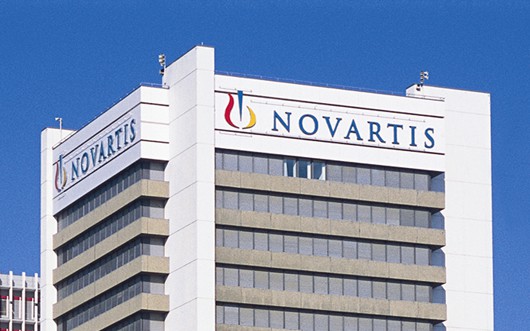
Novartis is showcasing its R&D pipeline at an event in London today, pledging to make no fewer than 60 ‘major’ submissions from 2019 to 2021 across its drug, cell and gene therapy platforms.
The tally across the US, EU and Japan includes 26 projects that the drugmaker thinks have blockbuster sales potential that have already passed the proof-of-concept stage in clinical development. Those are headed by Mayzent (siponimod) – due to launch in the first quarter of 2019 – which it says is the “first and only drug proven to delay progression” in patients with secondary progressive multiple sclerosis.
Mayzent is a follow-up to Novartis’ blockbuster MS therapy Gilenya (fingolimod), which brought in $2.5bn in the first nine months of the year and is facing the threat of generic competition in Europe, although Novartis won a reprieve in the US after defending a patent that extends out to 2027.
Following after in MS is ofatumumab, a potential rival to Roche’s fast-growing CD20-targeting drug Ocrevus (ocrelizumab) that is already approved to treat blood cancers under the Arzerra (brand name. Rebadged as OMB157, Novartis describes the drug as a next generation B-cell depletor with a “potentially favourable safety profile from faster b-cell repletion and preserved immunity, and with a convenient monthly sub-cutaneous dosing” which it hopes could challenge Roche’s drug – on course to make around $2bn in sales this year.

Novartis’ new drug development head John Tsai
Both these drugs have “the potential to change the standard of care,” according to the company. Also in that category and in late-stage clinical development are CRTH2 antagonist QAW039 (fevipiprant) for moderate-to-severe asthma – which it says combines the efficacy of new biologic drugs with oral dosing – as well as VEGF inhibitor brolucizumab (RTH258) for neovascular age-related macular degeneration (nAMD), anti-P-selectin antibody crizanlizumab (SEG101) for sickle cell disease, and canakinumab (ACZ885), an anti-interleukin-1 beta antibody for non-small cell lung cancer.
Advanced therapy medicinal products
Novartis’ push into advanced therapy medicinal products (ATMP) such as cell and gene therapies means it now has 13 candidates in clinical development with another nine due to start testing in humans next year.
Already active in this area with its lymphoma and leukaemia CAR-T therapy Kymriah (tisagenlecleucel), Novartis is highlighting new projects today including gene therapy AVXS101 for spinal muscular atrophy (SMA) type 1 – acquired as part of its $8.7bn takeover of AveXis – for which it hopes to claim regulatory approvals in the US, EU and Japan in the first half of 2019.
The company will also highlight its radioligand portfolio, currently headed by Lutathera (177Lu- oxodotreotide) for gastroenteropancreatic neuroendocrine (GEP-NET) tumours, which was recently bolstered by the $2.1bn acquisition of Endocyte adding 177Lu-PSMA-617, a potential first-in-class drug for the treatment of metastatic castration-resistant prostate cancer (CRPC).
Taking centre stage at the presentation will be John Tsai, the company’s new head of global drug development. Appointed in April from Amgen to fill the gap left by Vas Narasimhan moving up become CEO, Tsai has the task of steering this large scale pipeline to market.
Just last week the company said it would be culling around a fifth of its pipeline candidates, clearing out programmes which it deemed were not likely to be ‘transformational’ for patients.
Last month the company received a knock-back for a high-profile candidate when the FDA issued a Complete Response Letter (CRL) for canakinumab in cardiovascular disease, and the company may shed more light on its remedial plans for the drug later today.




